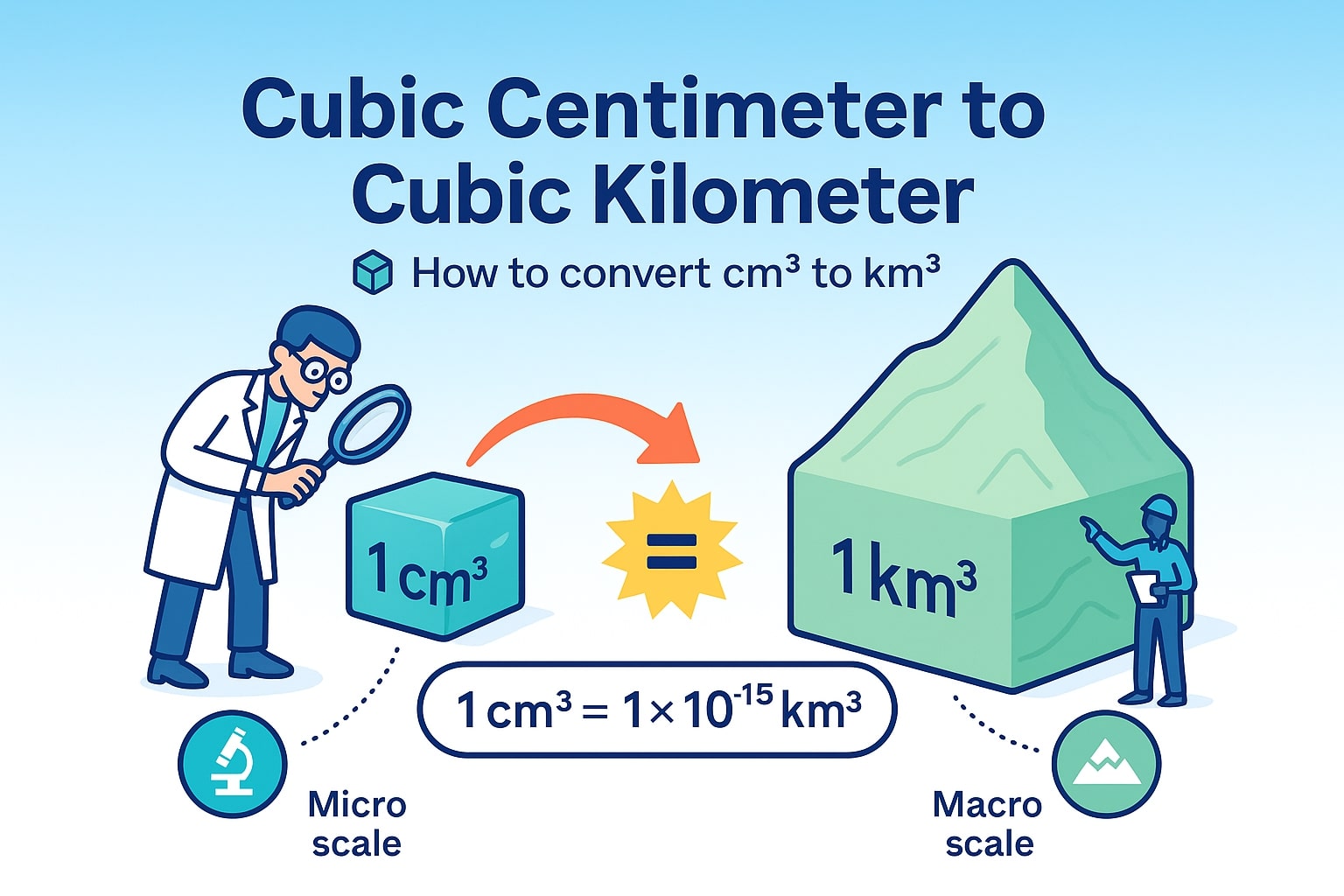Cubic Centimeter to Cubic Millimeter – How to convert cm³ to mm³
Need to switch between cubic centimeter to cubic millimeter measurements? Whether you’re working on a science project, calibrating tiny devices, or simply curious about how small a cubic centimeter really is, Jetcalculator helps you handle this conversion with ease. Below, we’ll explain the math, share some fascinating facts, and even highlight a real-world example where these units play a big role.

What is a cubic centimeter (cm³)?
A cubic centimeter (cm³) represents the space of a cube that’s 1 centimeter on each side. It equals 1 milliliter (mL), which is commonly used to measure liquids, medicines, and small product volumes.
Cubic centimeters show up everywhere – in engine specifications (cc), lab measurements, beverage volumes, and even in cooking. It’s one of the most familiar small-scale volume units.
What is a cubic millimeter (mm³)?
A cubic millimeter (mm³) is an even smaller unit, measuring the space of a cube 1 millimeter on each side. One cubic millimeter is 1/1,000 of a cubic centimeter, making it useful for extremely precise measurements in medicine, engineering, and scientific research.
From tracking microscopic fluid samples to modeling intricate parts, cubic millimeters allow scientists and engineers to work with extraordinary precision.
How to convert cubic centimeter to cubic millimeter
The math is simple:
1 cubic centimeter = 1,000 cubic millimeters (1 cm³ = 1,000 mm³)
To convert:
Cubic Millimeters (mm³) = Cubic Centimeters (cm³) × 1,000
Example: If you have 25 cm³ of liquid:
25 × 1,000 = 25,000 mm³
Skip the calculation by using our Volume Converter or explore other Conversion tools for fast, precise results.
Did you know?
-
A single sugar cube has a volume of about 1 cm³, which equals 1,000 mm³ – more than enough space to hold a few dozen grains of rice.
-
The average ant brain is roughly 0.1 cm³, or 100 mm³, proving how tiny yet complex living systems can be.
-
The Guinness World Record for the smallest glass-blown bottle measures just 0.2 cm³, or 200 mm³ – a volume so small it can sit on the head of a pin.
-
The human red blood cell count in an adult is measured in millions per cubic millimeter, which is why doctors use mm³ in blood tests rather than cm³.
The Microscopic Numbers That Advanced Medicine
In the 1950s, researchers developing early vaccines had to measure viral loads and active ingredients with extreme precision. According to the Journal of Clinical Investigation, most of these quantities were recorded in cubic millimeters, then scaled up to cubic centimeters when preparing doses for human trials.
By converting between cm³ and mm³, scientists ensured every test was accurate and consistent. This level of detail helped early vaccine programs avoid dosage errors and laid the groundwork for the precision medicine practices we use today.

Wrapping It Up
Converting cubic centimeter to cubic millimeter is as simple as multiplying by 1,000. Whether you’re calculating medical doses, scaling down designs, or just exploring how these two units relate, this conversion keeps everything precise.
For quick results and hassle-free conversions, try our Volume Converter or explore other Conversion tools to handle any volume calculation with ease.

